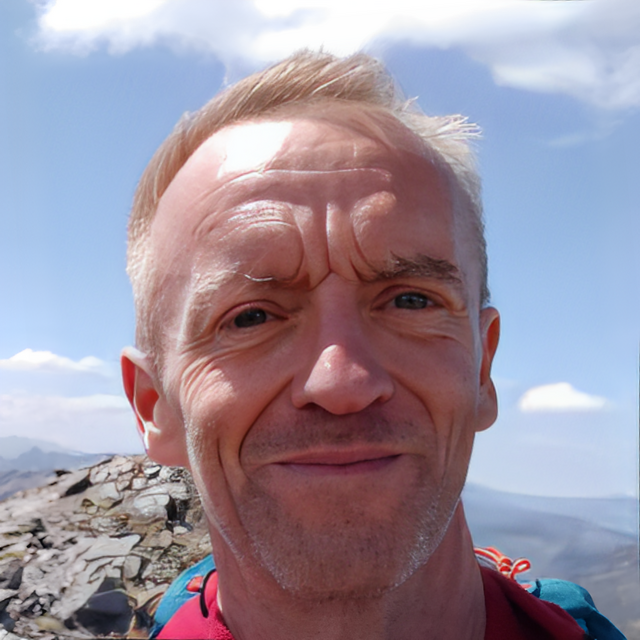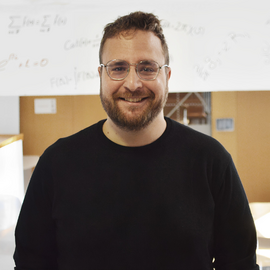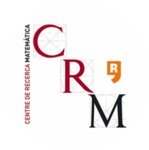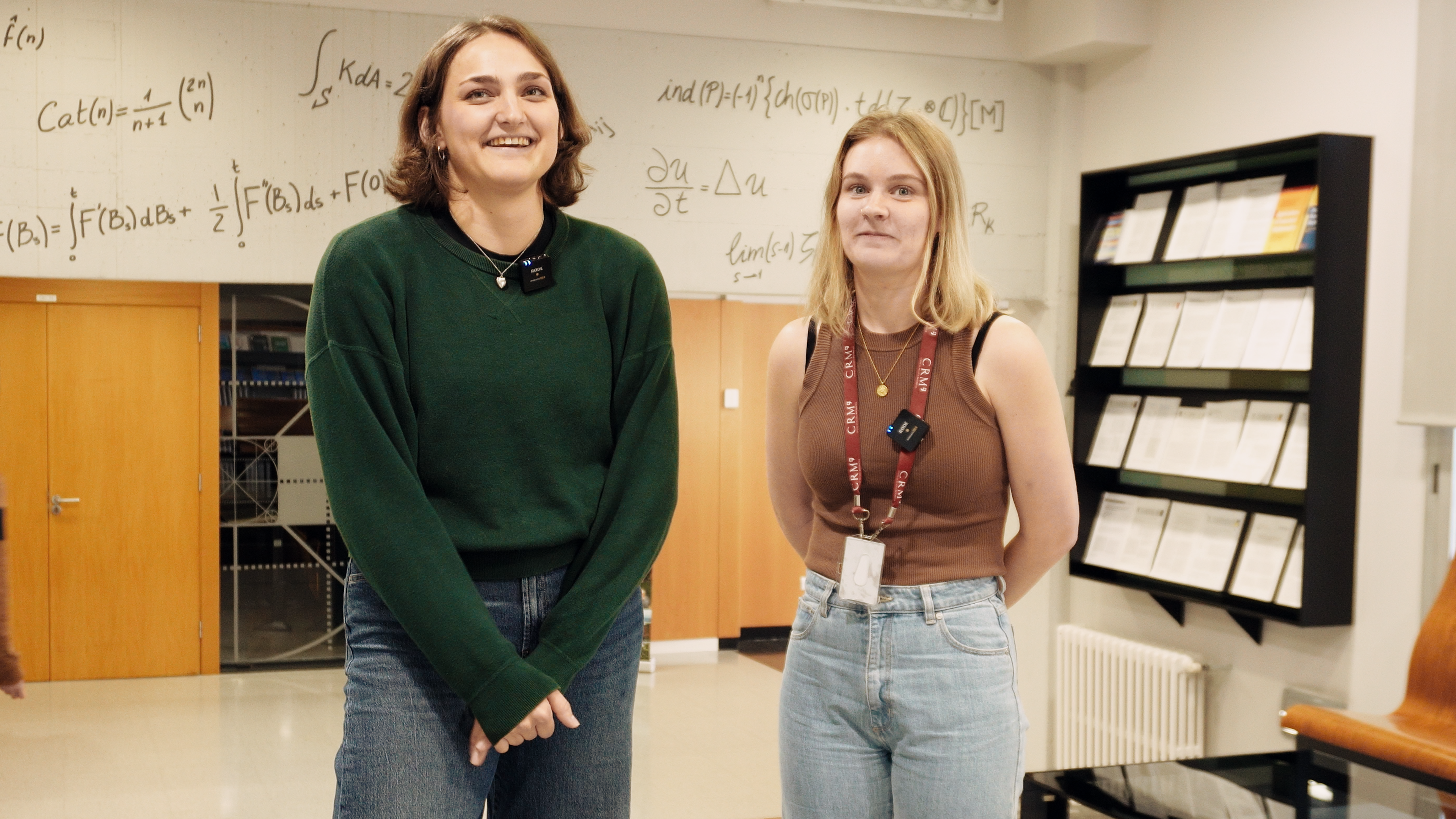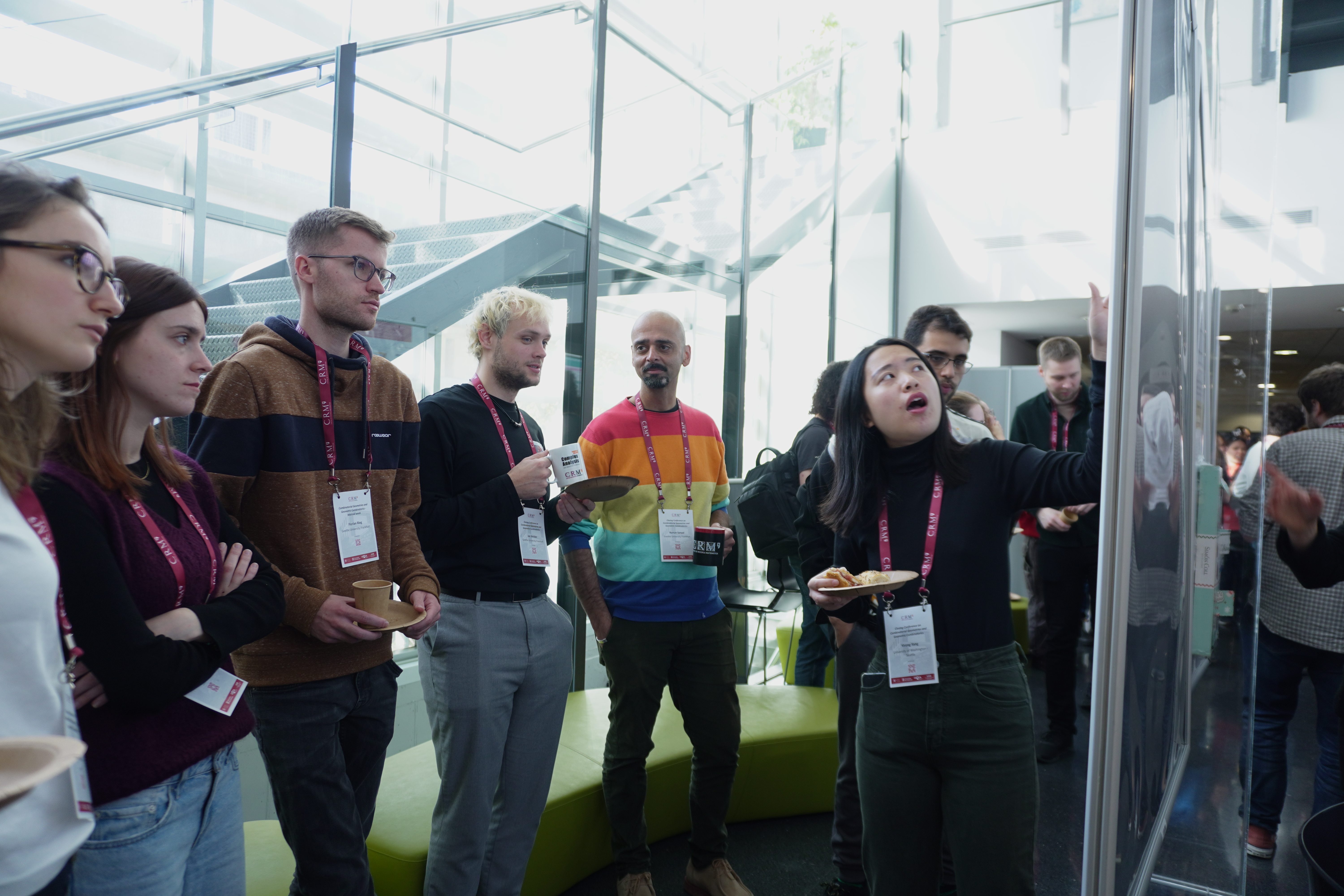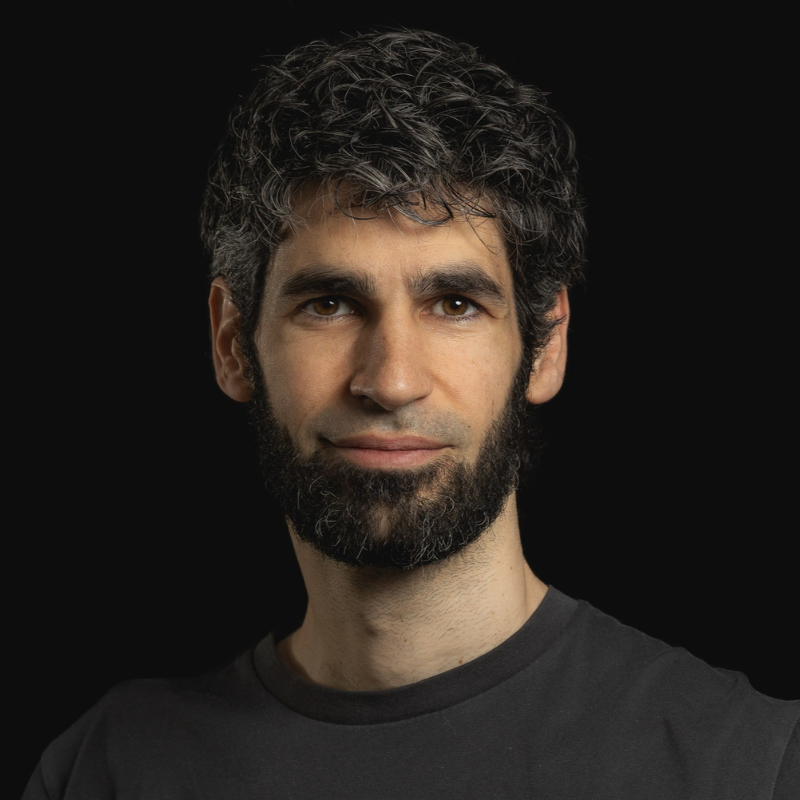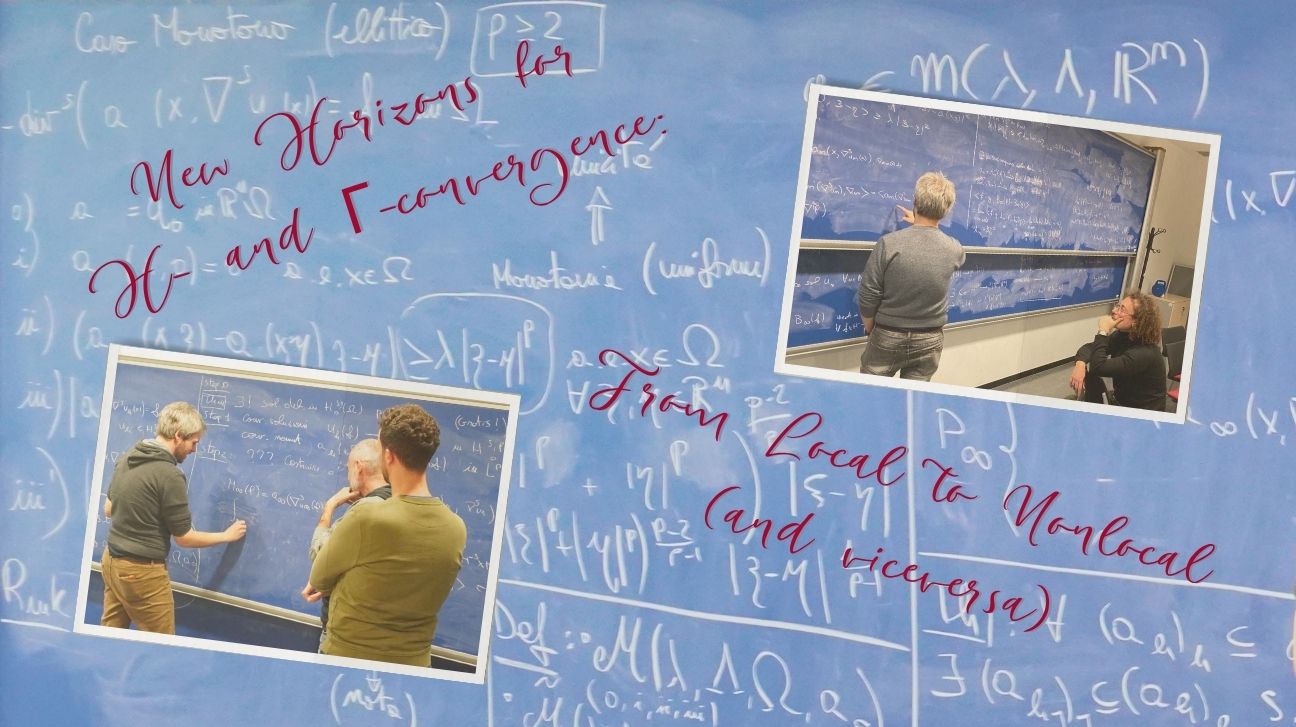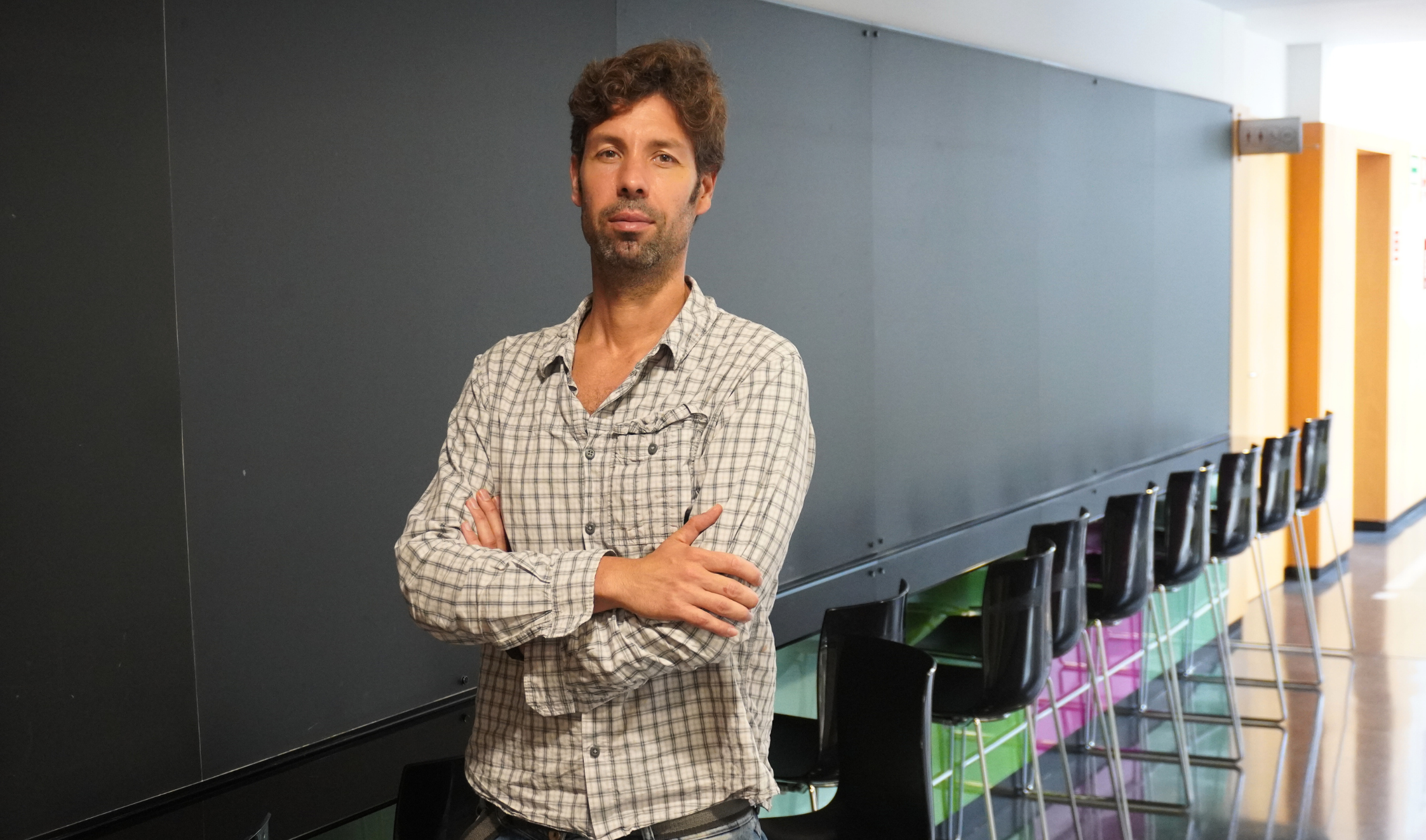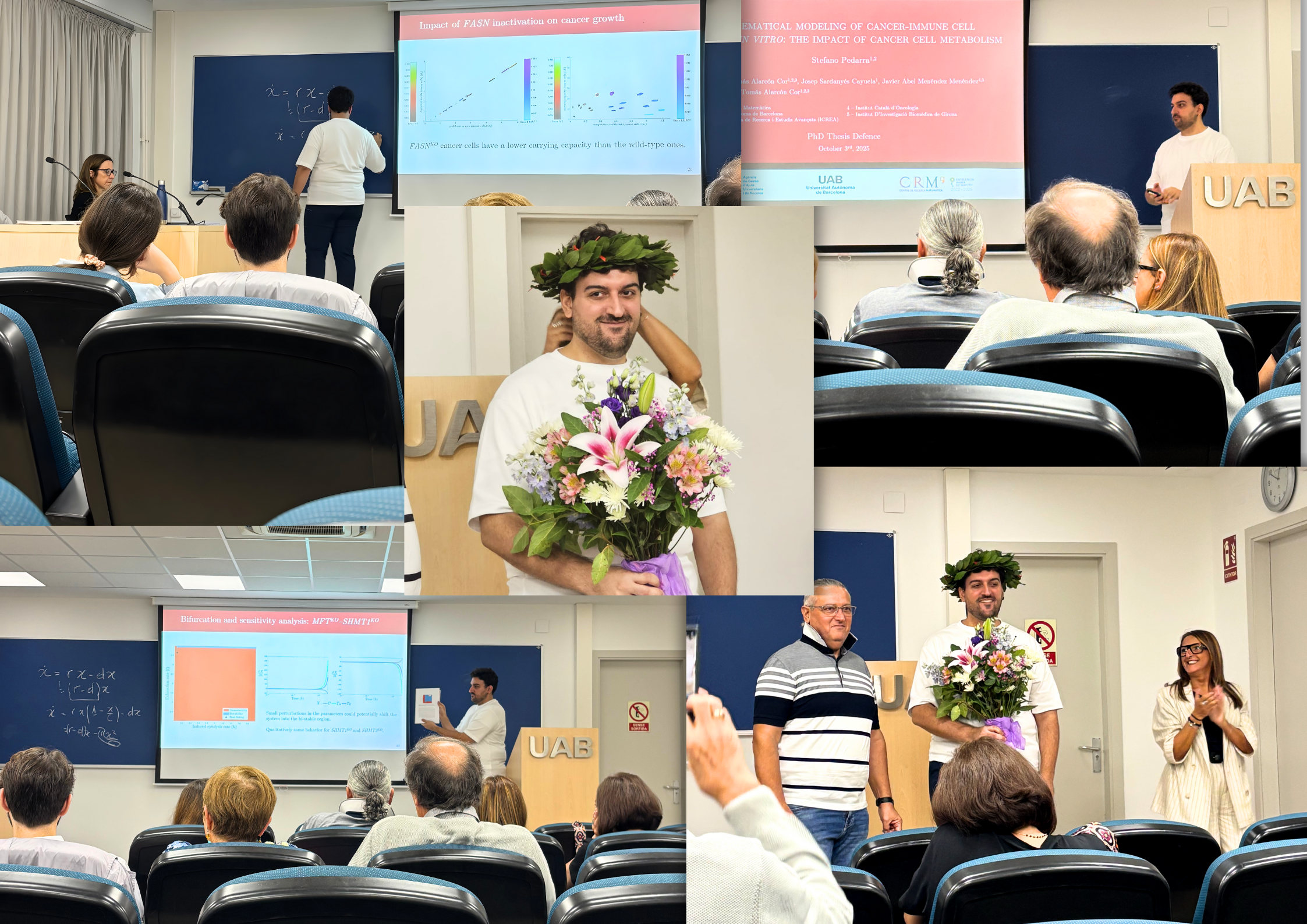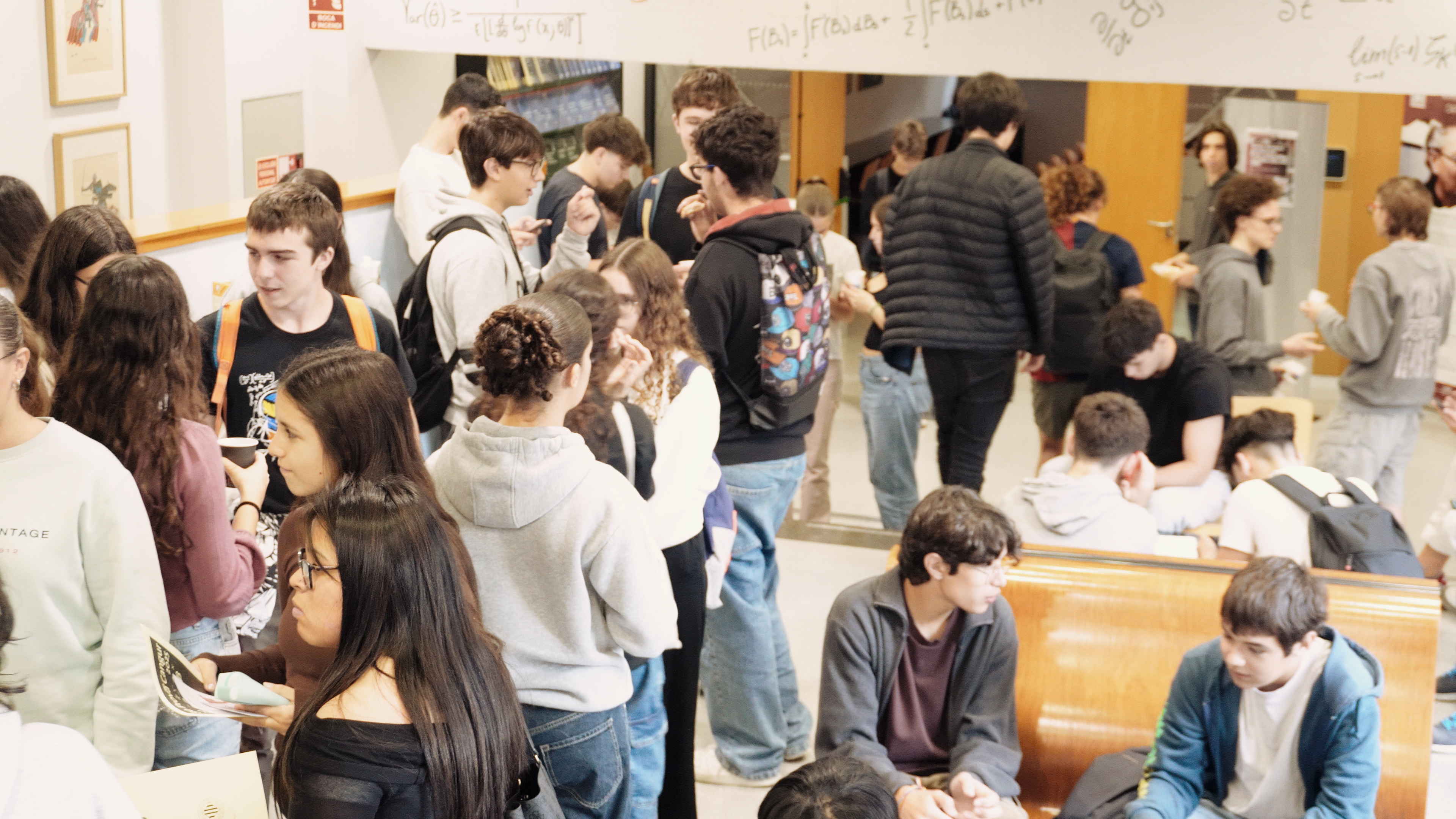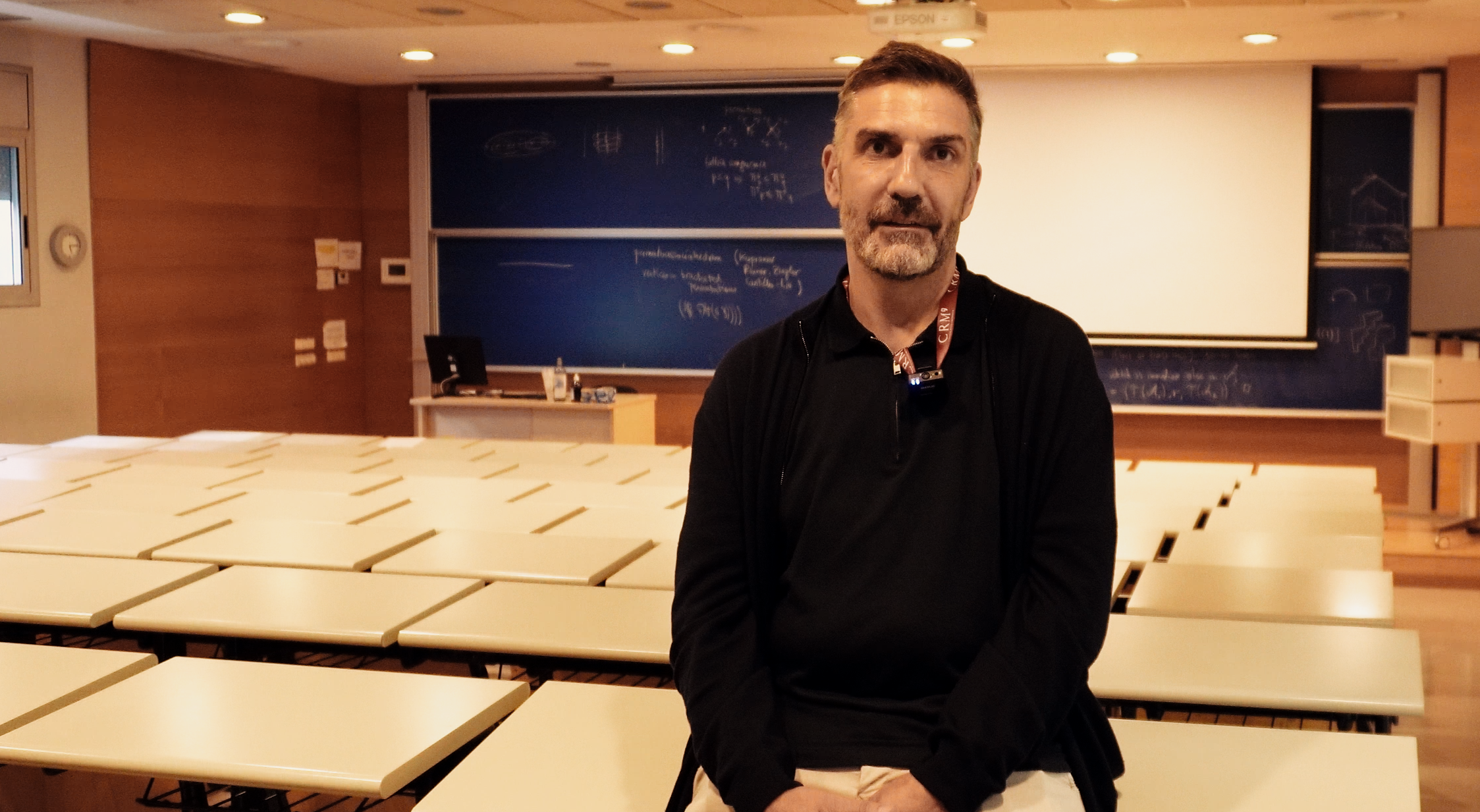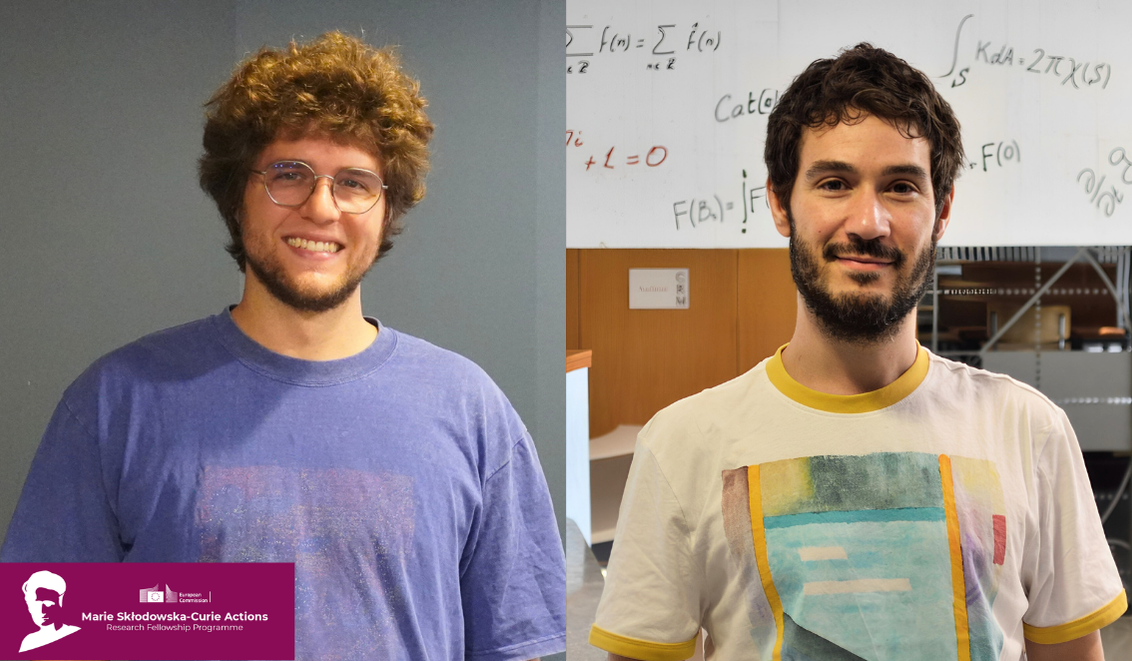
Every time we burn fuel, paint a car, or even produce “green” biogas, we release a cocktail of contaminants into the air. Many of these chemicals, such as siloxanes, toluene, or decane, are harmful to the environment and human health. They need to be captured before they escape into the atmosphere. Standard models deal with the capture of a single contaminant, but here’s the problem: these contaminants rarely come by themselves. They arrive together, often fighting for the same limited spots in the filters designed to trap them.
Imagine a crowded train at rush hour. Some passengers are pushy and determined (think “contaminant A”), while others are more passive (“contaminant B”). When the train (our filtration column) pulls in, who gets on board? And who gets pushed aside? That’s the question mathematicians Marc Calvo-Schwarzwälder (Universitat Politècnica de Catalunya–CRM), Tim Myers (CRM), Alba Cabrera-Codony (Universitat de Girona), and Abel Valverde (UPC) set out to answer. Their study, recently published in the first decile journal, International Journal of Heat and Mass Transfer, introduces a new mathematical model that predicts how two different contaminants behave when they compete for space on a filtering material.
Traditional models focus on a single contaminant and work well in simple cases, but things get complicated when multiple pollutants compete for the same space—one might stick more easily or even displace the other, making accurate predictions much more difficult.

Experimental setup. A gas mixture with two contaminants flows through a column filled with an adsorbent material, the contaminants compete for the adsorption sites.
Let the Math Do the Work
To tackle this, the team developed a mathematical model that treats the filtration column like a one-way street: contaminants flow in, interact with the adsorbent and each other, and slowly advance through the column. The model captures the key physical processes involved: how the pollutants move and spread (advection and diffusion), how they stick to and detach from the filter (adsorption and desorption), and how they compete for the same spots (replacement dynamics).
One of the key tools the researchers used is the idea of a “travelling wave”. This concept, borrowed from mathematical physics, allows the team to simplify a complex system of partial differential equations into a problem involving a single variable. “After the initial stages of the process,” explains Tim Myers, “we have a contaminant wave moving between the region in the column that is full of contaminant and a region far ahead where the adsorbent material is clean. By choosing a coordinate system that travels with this wave, we can find a fixed shape.”
“Mathematically,” he continues, “this means we can reduce a system of partial differential equations to a problem involving a single variable. This is much easier to solve and permits us to make analytical progress. Effectively, we can see how all the system parameters affect the adsorption process and thus how to improve or optimise the system.”
Building on the classic single-contaminant models (developed recently by the group), they introduced a new way to track how much of the filter’s surface each pollutant occupies and how much space remains free. As the pollutants travel through the column, each tries to stick wherever it can. However, because they are competing for the same sites, a stronger contaminant can push a weaker one off the filter and take its place.
The model uses simple chemical reaction rules to describe these behaviours, combined with equations that track the pollutants’ movement. The result is a compact yet powerful representation of a very messy process. To highlight the most influential dynamics, the researchers applied a non-dimensional formulation: all the quantities were rescaled so that only the key effects were retained.
“We let the maths do the work!” says Myers. “Common sense may help in deciding what is important and what isn’t, but we prefer to use non-dimensionalisation techniques. The size of the coefficients tells us which terms matter. Neglecting the small terms, we can simplify a model and have an idea of the expected errors resulting from the approximation.”
This method not only helps simplify the model but also allows researchers to estimate how far off the approximations might be. From there, they applied techniques such as the travelling wave approximations to find analytical solutions, which are more transparent than purely numerical ones.
“With an analytical solution,” adds Myers, “we can see exactly how system parameters affect a process and consequently identify ways to make improvements.”
Real-World Testing
A good model must match reality. The team validated their predictions using experimental data with real contaminants, including siloxanes and toluene on activated carbon, achieving over 98% accuracy (R2>0.98).
“The quality of the experimental data is critical,” says Marc Calvo. “The validation of the model, and therefore the conclusions drawn, depends on it. And it’s not enough for a single experiment to verify the results. To reduce the risk of misinterpretation, it is important to compare our solutions with multiple experiments, as we did in this work.”
This strong agreement suggests the model can better guide filter design and anticipate how more complex mixtures behave. But it also relies on key simplifications—only two contaminants at a time, irreversible attachments, and dominant species behaviour. “Neglecting desorption has been a critical assumption,” acknowledges Calvo. “Numerical simulations indicate that if this mechanism is included, the travelling wave strategy is no longer valid.”
“We have recently been able to solve the problem in the reversible case as well,” he notes. “But when more than two contaminants are considered, the modelling part becomes significantly more complex, and the number of assumptions increases. It will be crucial to have experiments that help us understand the processes and incorporate them into the model.”
And if you’re still wondering whether math can make a difference, Myers shares this anecdote: “A group of engineers once clapped when I finished demonstrating how a simple mathematical model could predict the ice growth on an aircraft. When I asked why they clapped, I was told no one thought a mathematician could solve their problem.”
Citation:
Calvo-Schwarzwälder, M., Cabrera-Codony, A., Valverde, A., Myers, T.G. (2025). An analytical model for column adsorption with two competing contaminants. International Journal of Heat and Mass Transfer, 245, 124938. https://doi.org/10.1016/j.ijheatmasstransfer.2024.124938
crm researchers
Tim Myers has over 30 years of experience in developing and analysing mathematical models for complex physical processes, with contributions spanning phase change, nanoscale optics, thin film flow, nanofluids, and the Heat Balance Integral Method. He promotes the practical use of mathematics as a Board Member of the European Consortium for Mathematics in Industry, co-ordinator of European Study Groups with Industry, and editor for both Mathematics in Industry Reports (CUP) and the Springer-RSME Book Series. He also serves on the European Mathematical Society’s Committee for Developing Countries and the Advisory Committee for the Eastern Africa Universities Mathematics Programme. His current research focuses on applying mathematics to environmental challenges, particularly the capture of contaminants.
Marc Calvo Schwarzwälder completed his doctoral studies at the Centre de Recerca Matemàtica and earned his PhD in Applied Mathematics from the Universitat Politècnica de Catalunya (UPC), where he also completed his Bachelor’s and Master’s degrees. After spending a short time in the consulting industry, he moved to the UAE, where he served as an Assistant Professor. During this time, Dr. Marc continued his collaboration with CRM researchers and, upon returning to Barcelona, took on a full-time research position at CRM. He later joined the Mathematics department of UPC as an Assistant Professor. His research primarily focuses on the mathematical modeling of physical and chemical processes, with a particular emphasis on environmental applications.
Subscribe for more CRM News
|
|
CRM CommPau Varela
|
BAMB! 2025: Participants Return to the CRM for Research Stays
In October 2025, the Centre de Recerca Matemàtica hosted Josefine Meyer (ISTA) and Cate MacColl (University of Queensland) for a month-long research stay following their participation in the BAMB! Summer School. Despite studying vastly different subjects, from...
Connecting Shapes, Patterns, and Ideas: the Closing Conference on Combinatorial Geometries and Geometric Combinatorics
During five days, the CRM hosted the Closing Conference of the MDM Focused Research Programme on Combinatorial Geometries & Geometric Combinatorics. The event featured plenary talks, contributed sessions, and posters on topics from matroids and polytopes to...
Xavier Ros-Oton among the 65 most cited mathematicians in the world
ICREA professor at the Universitat de Barcelona and CRM affiliated researcher Xavier Ros-Oton appears on Clarivate's Highly Cited Researchers 2025 list, which this year reinstates the mathematics category after two years of exclusion.Citations are a strange way to...
New Horizons for H- and Γ-convergence: From Local to Nonlocal (and viceversa)
The researchers Maicol Caponi, Alessandro Carbotti, and Alberto Maione extended the H- and Γ-convergence theories to the setting of nonlocal linear operators and their corresponding energies. The authors were able to overcome the limitations of classical localization...
Diego Vidaurre joins the CRM through the ATRAE talent programme
Diego Vidaurre has joined the Centre de Recerca Matemàtica through the ATRAE programme, bringing his expertise in modelling spontaneous brain activity across multiple data modalities. His work focuses on understanding how the brain’s intrinsic dynamics shape...
El CRM a la Setmana de la Ciència: una ruta entre dones, formes i pensament
El CRM va participar en la 30a edició de la Setmana de la Ciència amb una ruta guiada que va combinar les biografies de dones matemàtiques amb obres d'art del centre, connectant ciència, història i creació artística.El 12 de novembre, el Centre de Recerca Matemàtica...
Stefano Pedarra Defends his PhD Thesis on the Interaction between Tumour Cells and the Immune System
Stefano Pedarra has completed his PhD at the Centre de Recerca Matemàtica with a thesis exploring how tumour-cell metabolism shapes the immune system’s ability to fight cancer. His work brought mathematics and biology into direct conversation, from building models to...
Els estudiants participants a la prova de preselecció de Bojos per les Matemàtiques visiten el CRM
La prova de preselecció de Bojos per les Matemàtiques va reunir estudiants de tot Catalunya a la UAB i al CRM, amb presentacions a càrrec de Montse Alsina, presidenta de la Societat Catalana de Matemàtiques, Núria Fagella, degana de la Facultat de Matemàtiques i...
Jordi Mompart highlights the role of artificial intelligence in sport at the XIII GEFENOL-DIFENSC Summer School
The XIII GEFENOL-DIFENSC Summer School gathered over thirty researchers from across Europe to explore how statistical physics helps explain complex phenomena in biology, ecology, networks, and social systems. In his closing lecture, Jordi Mompart (UAB) examined how...
Critical Slowing Down in Genetic Systems: The Impact of Bifurcation Proximity and Noise
An international collaboration including researchers from the Centre de Recerca Matemàtica (CRM) has shown that when several bifurcations occur close to one another, their interaction can dramatically amplify critical slowing down effect - the progressive slowdown of...
Two CRM researchers begin their Marie Skłodowska-Curie fellowships
Gustavo Ferreira and Tássio Naia, CRM postdoctoral researchers and new Marie Skłodowska-Curie fellows. Gustavo Ferreira and Tássio Naia, who joined the CRM in 2023 through the María de Maeztu programme, have started their Marie Skłodowska-Curie postdoctoral...
Matroid Week at CRM: A Collaborative Dive into Combinatorial Geometries
From October 13 to 17, 2025, the CRM hosted Matroid Week, a research school on combinatorial geometries and matroid theory. Courses by Laura Anderson and Geoff Whittle explored intersection properties and structural emergence in matroids. The event fostered deep...

